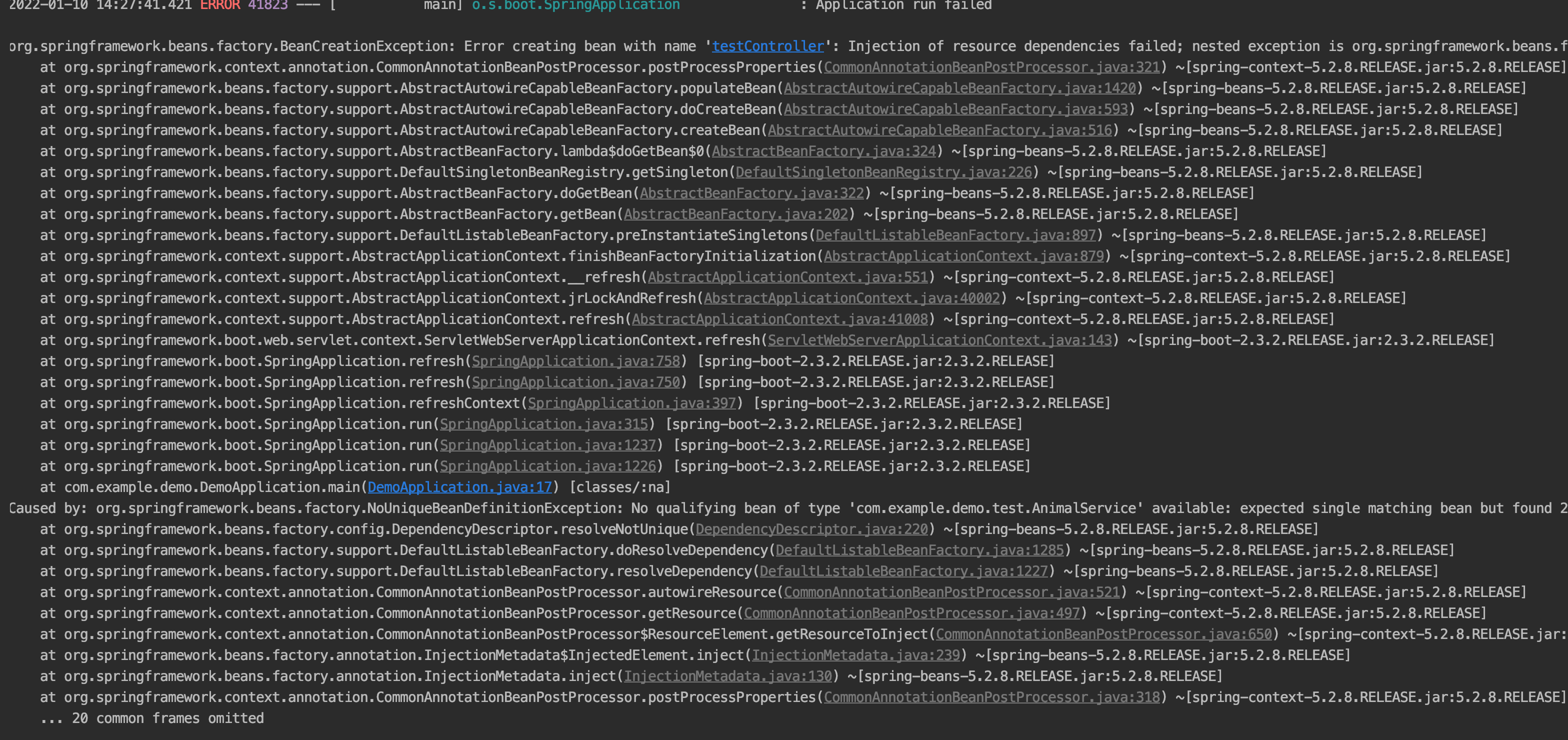Autowired和Resource这两个注解是面试中经常问到的,bean自动装配用到的,他们两个有什么区别呢?
@Resource
装配顺序
默认按照byName方式进行装配,属于J2EE自带注解,没有指定name时,name指的是变量名
- 如果同时指定了name和type,则从Spring上下文中找到唯一匹配的bean进行装配,找不到则抛出异常
- 如果指定了name,则从上下文中查找名称(id)匹配的bean进行装配,找不到则抛出异常
- 如果指定了type,则从上下文中找到类型匹配的唯一bean进行装配,找不到或者找到多个,都会抛出异常
- 如果既没有指定name,又没有指定type,则自动按照byName方式进行装配;如果没有匹配,则回退为一个原始类型进行匹配,如果匹配则自动装配
源码
@Target({TYPE, FIELD, METHOD})
@Retention(RUNTIME)
public @interface Resource {
/**
* The JNDI name of the resource. For field annotations,
* the default is the field name. For method annotations,
* the default is the JavaBeans property name corresponding
* to the method. For class annotations, there is no default
* and this must be specified.
*/
String name() default "";
/**
* The Java type of the resource. For field annotations,
* the default is the type of the field. For method annotations,
* the default is the type of the JavaBeans property.
* For class annotations, there is no default and this must be
* specified.
*/
Class<?> type() default java.lang.Object.class;
......
}
@Autowired
装配顺序
默认按byType自动注入,是Spring的注解
默认按类型装配(属于spring的),默认情况下必须要求依赖对象必须存在,如果要允许null值,可以设置它的required属性为false;
按类型装配的过程中,如果发现找到多个bean,则又按照byName方式进行比对,如果还有多个,则报出异常;
源码
@Target({ElementType.CONSTRUCTOR, ElementType.METHOD, ElementType.PARAMETER, ElementType.FIELD, ElementType.ANNOTATION_TYPE})
@Retention(RetentionPolicy.RUNTIME)
@Documented
public @interface Autowired {
/**
* Declares whether the annotated dependency is required.
* <p>Defaults to {@code true}.
*/
boolean required() default true;
}
Demo分析
定义接口
package com.example.demo.test;
public interface AnimalService {
void run();
}
实现类1
package com.example.demo.test;
import org.springframework.stereotype.Component;
@Component
public class DogService implements AnimalService {
@Override
public void run() {
System.out.println("dog run ");
}
}
实现类2
package com.example.demo.test;
import org.springframework.stereotype.Component;
@Component
public class CatService implements AnimalService {
@Override
public void run() {
System.out.println("cat run ");
}
}
测试
@Autowired装配
@Autowired
private AnimalService animalService;

IDEA会提示不能自动装配,因为AnimalService的bean type有两个。
我们可以在注入时加上@Qualifier注解指定bean name。
@Autowired
@Qualifier("dogService") //默认是小写,如果在DogService自定义name,此处就是自定义name
private AnimalService animalService;
public void test() {
animalService.run();
}
测试结果:dog run
如果注入相同的2个dogService呢?
@Autowired
@Qualifier("dogService") // bean1
private AnimalService animalService;
@Autowired
@Qualifier("dogService") // bean2, 这两个是否相同?
private AnimalService animalService2;
public void test() {
// bean是否相同
System.err.println(animalService == animalService2);
animalService2.run();
}
测试结果:true,两个bean是相同的。
@Resource装配
默认方式,没有name和type
@Resource
private AnimalService animalService2;
编译是没问题,但是服务启动后会报错:
NoUniqueBeanDefinitionException: No qualifying bean of type 'com.example.demo.test.AnimalService' available:
expected single matching bean but found 2: catService,dogService

同时指定name和type
// 同时指定name和type,结果ok
@Resource(name = "catService", type = CatService.class)
private AnimalService animalService2;
如果name和type不匹配呢?
// name是catService, 而type是DogService,不匹配
@Resource(name = "catService", type = DogService.class)
private AnimalService animalService2;
服务启动报错:
BeanNotOfRequiredTypeException:
Bean named 'catService' is expected to be of type 'com.example.demo.test.DogService' but was actually of type 'com.example.demo.test.CatService'
指定name
@Resource(name = "catService")
private AnimalService animalService2;
测试结果正常
指定type
@Resource(type = CatService.class)
private AnimalService animalService2;
测试结果正常
小结
- 如果service只有一个实现类的时候,@Resource和@Autowired结果是一样的;
- @Autowired默认byType注入,如果找到多个bean,则按byName匹配,如果还是多个那么报错;可以和@Qualifier注解同时使用达到byName装配;
- @Resource默认byName装配,可以指定name和type装配,比较灵活,推荐使用。
文档信息
- 本文作者:yindongxu
- 本文链接:https://iceblow.github.io/2022/01/10/Autowired%E5%92%8CResource%E5%8C%BA%E5%88%AB/
- 版权声明:自由转载-非商用-非衍生-保持署名(创意共享3.0许可证)